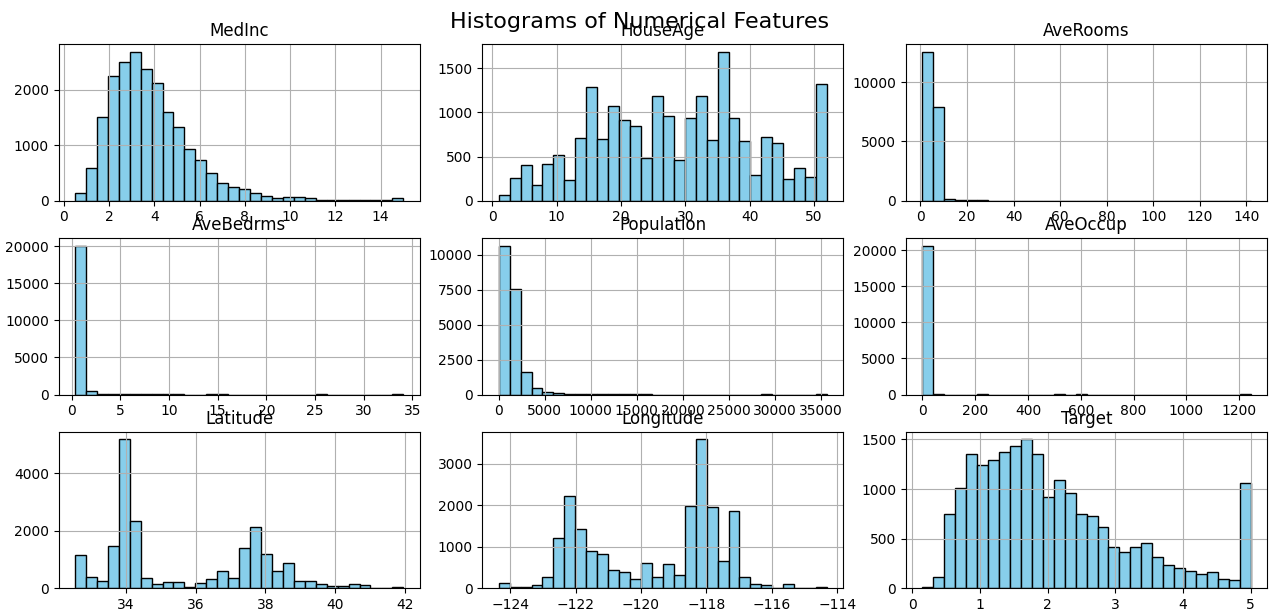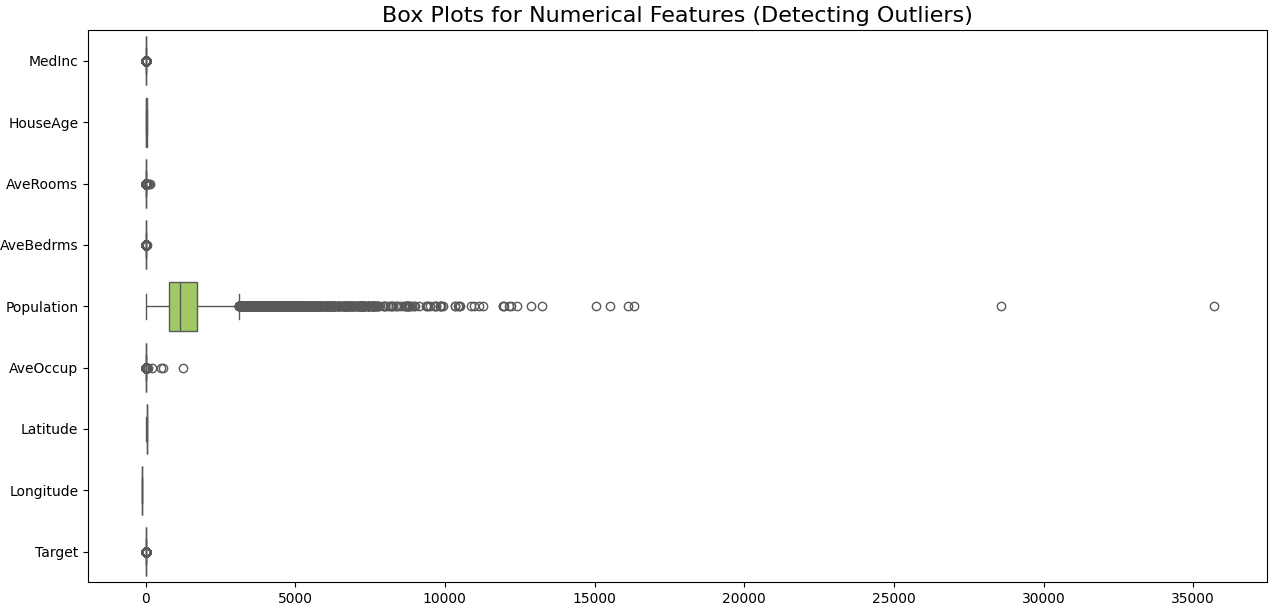Program
1. Develop a program to create histograms for all numerical features and analyze the distribution of each feature. Generate box plots for all numerical features and identify any outliers. Use California Housing dataset.
import pandas as pd
import numpy as np
import matplotlib.pyplot as plt
import seaborn as sns
from sklearn.datasets import fetch_california_housing
california_housing = fetch_california_housing()
X = california_housing.data
y = california_housing.target
df = pd.DataFrame(X, columns=california_housing.feature_names)
df["Target"] = y
print("\n📊 Statistical Summary of the Dataset:")
print(df.describe())
df.hist(bins=30, figsize=(15, 10), color='skyblue', edgecolor='black')
plt.suptitle('Histograms of Numerical Features', fontsize=16)
plt.tight_layout()
plt.show()
plt.figure(figsize=(15, 8))
sns.boxplot(data=df, orient="h", palette="Set2")
plt.title('Box Plots for Numerical Features (Detecting Outliers)', fontsize=16)
plt.tight_layout()
plt.show()
def find_outliers_iqr(data):
outlier_dict = {}
for column in data.columns:
Q1 = data[column].quantile(0.25)
Q3 = data[column].quantile(0.75)
IQR = Q3 - Q1
lower_bound = Q1 - 1.5 * IQR
upper_bound = Q3 + 1.5 * IQR
outliers = data[(data[column] < lower_bound) | (data[column] > upper_bound)][column]
if not outliers.empty:
outlier_dict[column] = outliers.values
return outlier_dict
outliers = find_outliers_iqr(df)
Output:




📊Statistical Summary of the Dataset:
MedInc HouseAge ... Longitude Target
count 20640.000000 20640.000000 ... 20640.000000 20640.000000
mean 3.870671 28.639486 ... -119.569704 2.068558
std 1.899822 12.585558 ... 2.003532 1.153956
min 0.499900 1.000000 ... -124.350000 0.149990
25% 2.563400 18.000000 ... -121.800000 1.196000
50% 3.534800 29.000000 ... -118.490000 1.797000
75% 4.743250 37.000000 ... -118.010000 2.647250
max 15.000100 52.000000 ... -114.310000 5.000010
[8 rows x 9 columns]